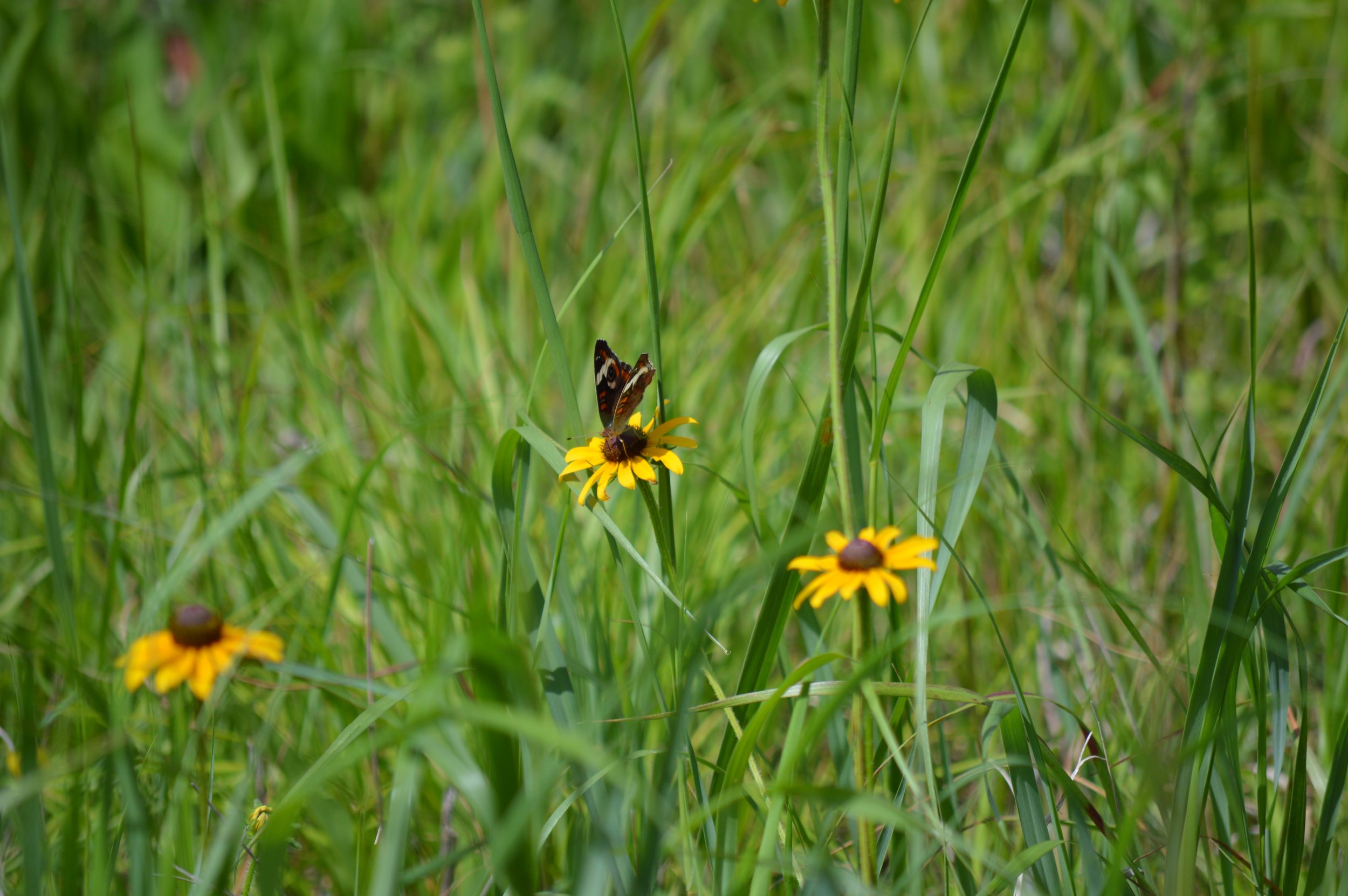Black-Eyed Susan’s Sunny Delight
The Coastal Prairie Conservancy has collaborated with HNPAT and Clark Condon to create the 9 Natives program, which helps to promote the value of native plants for pollinators and makes native gardening more accessible for newcomers. By bringing bits of the prairie into the city, individuals and families can help support pollinators and learn about the historic coastal prairie landscape. The Coastal Prairie Conservancy has produced a video and supporting materials that demonstrate how to create a pollinator garden and how this will make a difference for local wildlife throughout the city.
Photo by Scott Gilb
Whether you have a backyard or live in an apartment or townhouse with limited yard space, the 9 Natives for Sun and 9 Natives for Shade can bring natural beauty to your surroundings without requiring a lot of maintenance. The next feature is the cheerful black-eyed Susan (Rudbeckia hirta), a native gem that will brighten up any green space!
Black-eyed Susan, also known as Gloriosa Daisy, is a charming wildflower that captures the essence of sunshine on the prairie. Golden yellow petals contrast the prominent dark brown or black central cone, making these tall, abundant flowers a distinctive favorite among gardeners and nature enthusiasts.
Black-eyed Susan thrives in full sun, so choose a location that receives at least 6 to 8 hours of direct sunlight daily. Whether you have a backyard, a balcony, or small garden, this versatile plant can be grown in containers or garden beds, bringing a burst of vibrant color to any space. When it comes to soil, black-eyed Susan is adaptable and can grow in various soil types, including sandy or loamy soil. However, it prefers well-draining soil that is moderately fertile. If your soil is heavy or rich in clay, adding organic matter such as compost can improve drainage and provide necessary nutrients, ensuring healthy growth and abundant blooms.
Black-eyed Susan can be started from seeds or purchased as young transplants from local nurseries. If starting from seeds, sow them directly into the soil after the last frost date, following the recommended depth and spacing. Water the seeds gently and keep the soil consistently moist until they germinate and establish. If using transplants, dig a hole slightly larger than the root ball and place the plant in the hole, backfilling with soil and gently firming it around the base. Water the transplants thoroughly after planting to help them settle in.
This native plant offers a multitude of benefits for your urban garden, making it a favorite among gardeners:
Vibrant color: The golden yellow petals of black-eyed Susan add a splash of vibrant color to your garden, creating a visually stunning display.
Pollinator attraction: The abundant blooms of black-eyed Susan act as magnets for butterflies, bees, and other pollinators, inviting them to your garden and supporting local ecosystems.
Extended blooming period: Black-eyed Susan blooms from summer through fall, providing continuous color and interest in your urban garden, even as other plants begin to fade.
Low maintenance: This resilient plant is relatively low maintenance, requiring minimal care once established. It is tolerant of dry conditions and can withstand periods of drought, making it suitable for urban environments with limited water resources.
Cut flower potential: Black-eyed Susan's vibrant blooms make excellent cut flowers, bringing their cheerful beauty indoors to brighten up your living space.
Fun Fact: Black-eyed Susan is the state flower of Maryland!
The golden blooms of the black-eyed Susan will add a touch of native beauty to your green spaces, and its adaptability, vibrant colors, pollinator attraction, extended blooming period, and low maintenance needs make this native species a great choice! Stay tuned for our next article where we'll introduce lemon beebalm, another native plant from CPC’s 9 Natives program!


